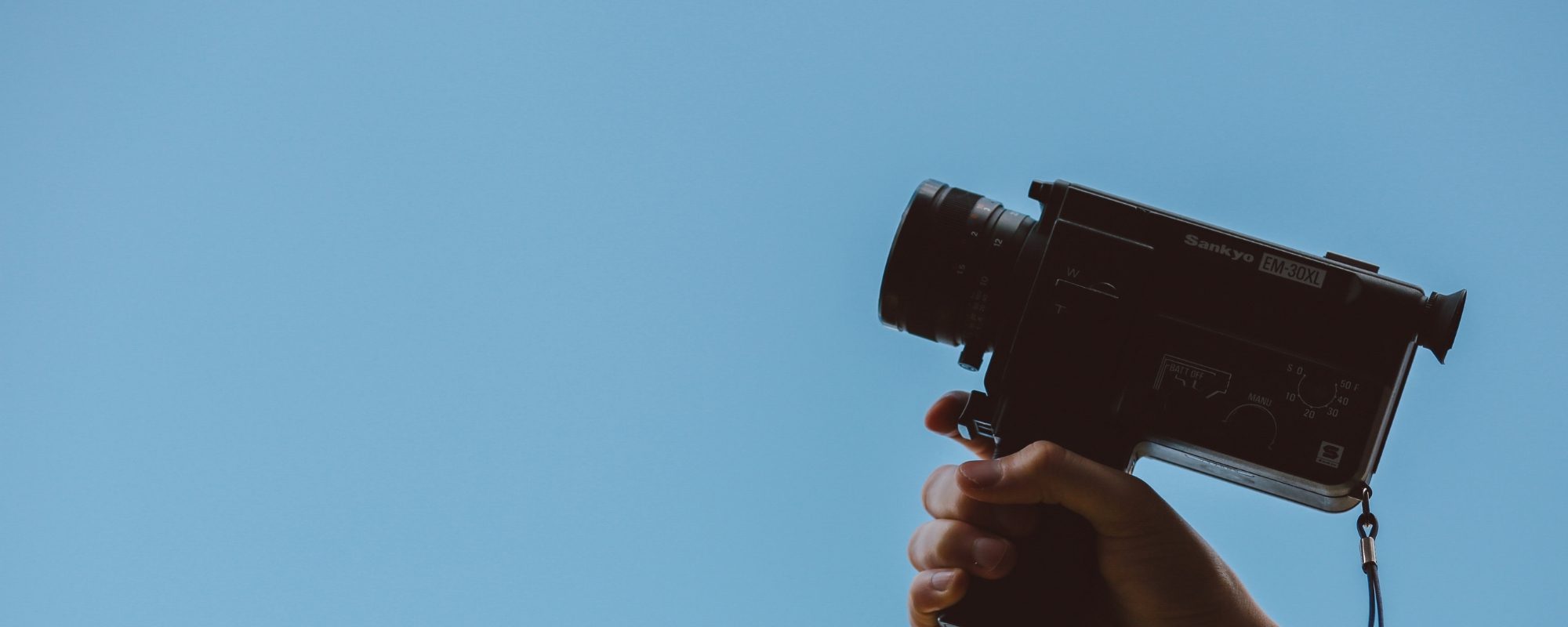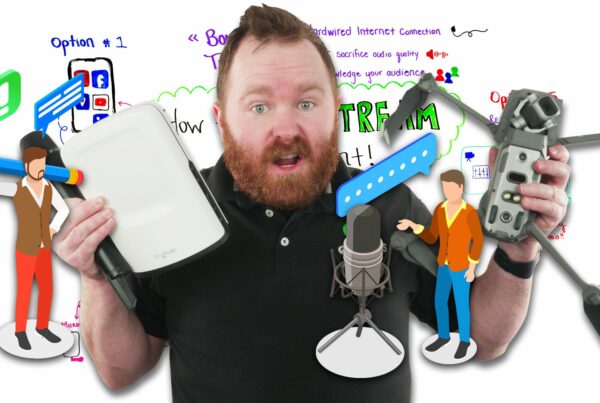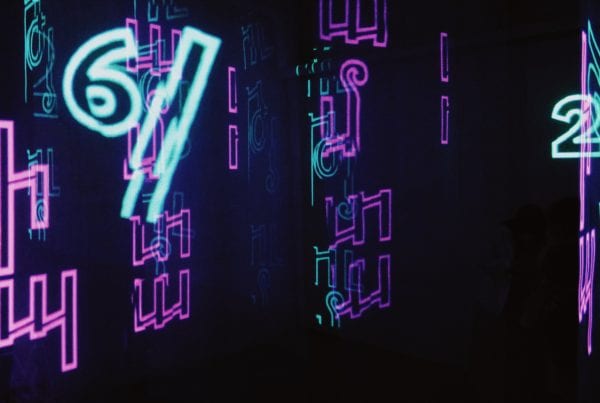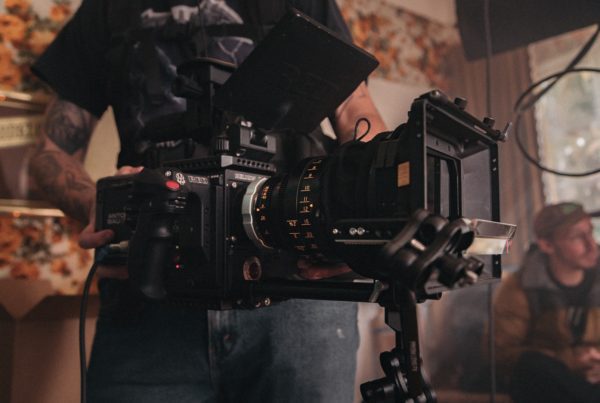It’s time for another Whiteboard Wednesday, so take a seat and let’s talk video switchers. Yes, this week’s episode is all about this small piece of equipment that you may or may not know you have! If you’re in the event planning industry, there’s a 99.9% chance you work with laptops or cameras. And if you do, then congratulations – you have a video switcher, and we’re here to tell you more about it.
Today, Will Curran will walk you through everything you need to know about this equipment. What are the features? What do you need this for? Should you upgrade to a more complex version, or stick to what you already have? These are some of the topics our awesome host is going to cover on this episode. Buckle up and press play, we’re going to video switchers’ learning party!
How Video Switchers Work
A video switcher is a piece of equipment that’s very common in corporate events and any type of video broadcast at all. Chances are if you have laptops or cameras, chances are you have a video switcher at your event, whether you knew that or not.
But I want to educate you a little bit on how they work because there are a couple of questions we get all the time from planners about how they work, and what do we need them for. When do we need to upgrade to the next level for a more expensive one? And I want to explain how they simply work and how they get more complex, so you can understand, when do you need to bring in that big gun of an awesome switcher for your next event.
Video Switchers: What Are They & What Do They Do?
A video switcher looks something like this. This is an amazing artist representation of what a video switcher looks like. You have some knobs and buttons. Most of this stuff, you don’t even have to worry about but what you do know is that essentially on the back of it has a bunch of inputs, similar to kind of a TV where you have HDMI inputs, you have maybe VGA inputs, or maybe a composite, BNC, I think we’ve done a Whiteboard Wednesday on video cables. If we haven’t, that’s probably going to be coming out real soon.
But there are all these different types of video cables, everything kind of plugs into it. Most commonly, you’ll see is things like laptops. For example, if you have two presenting laptops. If you have one presenter going up, plugging in their own laptop, then the next presenter wants to queue up their laptop, get it plugged in, it allows you to hook up those multiple sources. Or, you can also bring in things like cameras as well, which is really cool. Basically bringing these multiple sources, and as the title implies, they basically allow you to switch between them.
Some Cool Features
You can do things like nice fades, you can do those nice ’80s transitions where it does like a star. Basically anytime you see a fade and a transition in between two different video sources, like laptops or cameras, you will basically see a video switcher. Still with me so far? All right. Now, we’re going to get a little bit more complicated. That’s the basics of a switcher. Every switcher has different features and capabilities, and everything like that. Some, for example, if you have 30 different laptops being plugged into it, and you might need a little bit bigger of a switcher right? Or if you’re using a certain type of camera, you might need a certain type of video switchers.
One of the cool features that a lot of video switchers have though is not only can you bring in laptops and cameras and different input sources, you can technically bring like a DVD player in, you can plug in Live TV, DirecTV box if you wanted to. You could do a lot of different things in there. But what’s also cool is a lot of them allow you to also bring in graphics. Traditionally, what we usually do if you’re running graphics, for example, a PowerPoint, or you’re showing video content, you’re usually going to play that off of a laptop, running software to be able to do that. However, if you just want to, for example, just show a logo.
Exemplifying
A very basic setup we’ll even see for very small events, is that if you have one laptop running all the presentations, and each one’s broken up then you have to close PowerPoint and open up the next one, what’s great is you can always transition back to the graphic, which you actually load into the switcher. What’s great about that is that you could have a very professional presentation. We’ve all seen it before where you’ve been in a presentation, one presentation gets done, they hit escape on PowerPoint, and it goes to the No Signal, or they unplug the laptop, it goes to No Signal. Or let’s say you can see them on screen, opening the next presentation. You see email notifications pop up.
A lot of switchers will have the ability for you to load logos and a graphic and things like that. Sometimes up to two, three, four different graphics into it, and use it as one of these sources. Pretty neat right? It allows you to take a little bit more professionalism when it comes to your event, to make it run just a little bit more smooth. If you are running in currently like a break room or something like that and you’re used to seeing that unplug and it goes to No Signal if you want to make it run a little bit clearer, grab a video switcher, and it’ll allow you to clean it up just a little bit.
Video Switchers: The Nitty Gritty
Most traditional switchers will have one, maybe two outputs. What we mean by outputs is that you take all the switching, all the, you go in the laptop, things like that, then it’s going to output, and you’re going to have a cable that then runs to your projector/TV. We’ll call that your main output right?
The Output Case
In most cases, for example, if you have a two-screen setup, very common in corporate events, you may have one screen to the left of the presenter, and the one to the right. Usually what we’ll do is we’ll go out of the switcher, and then we use a box, a little splitter box, we call it a distribution amplifier. We use a box like that to split the video signal and then go to each projector. So if you have two projectors and you want the same thing on each one, we got one cable that runs all the way from the back of the room, all the way to behind the stage, splits into two cables, and then goes to each projector. And you get what’s called a duplicate deal.
With me so far? What that allows is because you’re splitting it at that box and sending the same thing to both ones, that’s really easy to do. Also really common is that for example, is when we see a setup like this, you might have a downstage monitor, we’re going to definitely a video on downstage monitors and how they’re making your event a lot smoother. But let’s say for example you want to have a downstage monitor at the edge of the stage, for example. Man, I don’t’ even think that’s in the frame. But let’s say you have that monitor that’s facing back towards the stage so the presenter can see their presentations, and they can see what they’re talking about. That’s what a downstage monitor will do.
The (Non-Banana) Split
What we’ll also do is then we’ll split it off and we can split that to that two. Again, duplicate screens, very easy to do, very inexpensive. What’s also great is a lot of switchers will also have this other output as well though. We call this the preview output. So a lot of times, it’s done in what’s called multi-view and you kind of see this in security cams where you see lots of different cameras on one single screen. It has kind of like a grid system where you can pick and pull and put it in there, kind of like the way this looks. That can be very, very easy to do.
A lot of the switchers will have that output as well. Sometimes though, you’ll get lucky, and a switcher that you might be using, for example, a brand called Black Magic, has what’s called an aux output. This is extremely helpful for AV people because what the aux output is, is like another output. You have another cable that kind of comes off of it. What’s great is, for example, this could be chosen to be output one and this is output two.
That’s Cool Because…
What’s great about that, it’s going to allow us to do what’s over here, when we have different sources going to different outputs. The most common thing that we get as a question, when we get from planners is, okay, we have this setup, we have presentation going to the left and right of the screen and down to the stage. What happens if I want a camera on this one? We’ll call this Y, for example. Now all of a sudden, it’s not a duplicate of X. Now, there’s a Y involved. A completely different signal going to that. Ooh yikes! Or, also common, what if I want, for example, a different source going to the downstage monitor?
I want a presenter view, or I want them to be able to see the Q&A software, but I want to keep their presentation up on the screen. Well, that’s when you’re going to need different outputs. That’s where this kind of secondary output comes in. You’re lucky that there are some switchers that are inexpensive enough that allow you to do this to the output device. For example, if you have the main output, then maybe one goes to the auxiliary. However, also really common is then we want three sources, I’ve seen this before where for example, let’s say you have a four-screen, let’s say we have this. Let’s start with a three-screen setup. You have the X going, or this is a three-screen setup. Let’s say this is X, Y, and the third thing is the downstage monitor, is Z. You have output one, output two, output three.
More Outputs!
Well, then you need three different outputs from your video switchers. When you get to two, some switchers can do that. When you get to three a lot of switchers don’t have that, and that’s when you start to get into the expensive equipment. That’s something to always keep in mind. If you want the ability to do these different sources, it gets expensive very quickly. So when you get into these different sources, I’ve seen it before where clients will say, well what if we want to do, for example, we want to have one video playing on this one, another video playing on this one, another video playing on this one, and another. Four different sources go out into those screens. That’s when you get into very, very expensive equipment. That’s when you get into things, for example, there’s the encore switching system.
The Spider System
There’s also, you may have heard of the spider system as well. These are very advanced, very expensive systems to be able to do this sort of stuff. I know probably all the AV people in the comments are raving, going well there’s this one switcher that does that. We’re just talking about commonly available equipment for all events that you can get in almost every market. What’s great is that you do need one of these advanced systems to be able to do it. But what’s so cool about it is that you can do things like, for example, on those switchers, is you can make it so it’s the same source goes to all four screens. You can make it so there’s a different source going to every screen. A lot of really cool stuff.
The Important Things
If you want to have a lot of different sources, it’s going to get expensive. So, if you want to keep it simple and you want to make it so you just have screen X and screen X, super easy. Really inexpensive to do. You want to get Q, X, Y, Z, starts to get a little bit more expensive to be able to do that. Because this is the element that we’re talking about, the switcher. You need a more robust switcher to be able to do those things.
The thing to keep in mind too, as well, is if you are bringing in two systems that’d be able to do this, you’re using an encore system or a spider system, technically, they have to be used, you want them to be used by certified engineers as well, who understand, they’re very complex. I don’t even understand them and I consider myself a pretty techie person. So you want to make sure that you have a certified engineer to be able to do it as well.
Conclusion
There you go. That’s video switchers. Again to recap, you bring in a bunch of different sources laptops, cameras, graphics, they plug into the system and then you can decide where they go. You can have very simple ones that go to one single output like adjust your projectors and then you can split it from there and duplicate it. You can sometimes find switchers like you do like a secondary output an auxiliary. And then you know when you get to the more crazy intense ones you have this ability to do four or five different outputs and where they all go and it does just decide and have a lot of fun with those as well.











